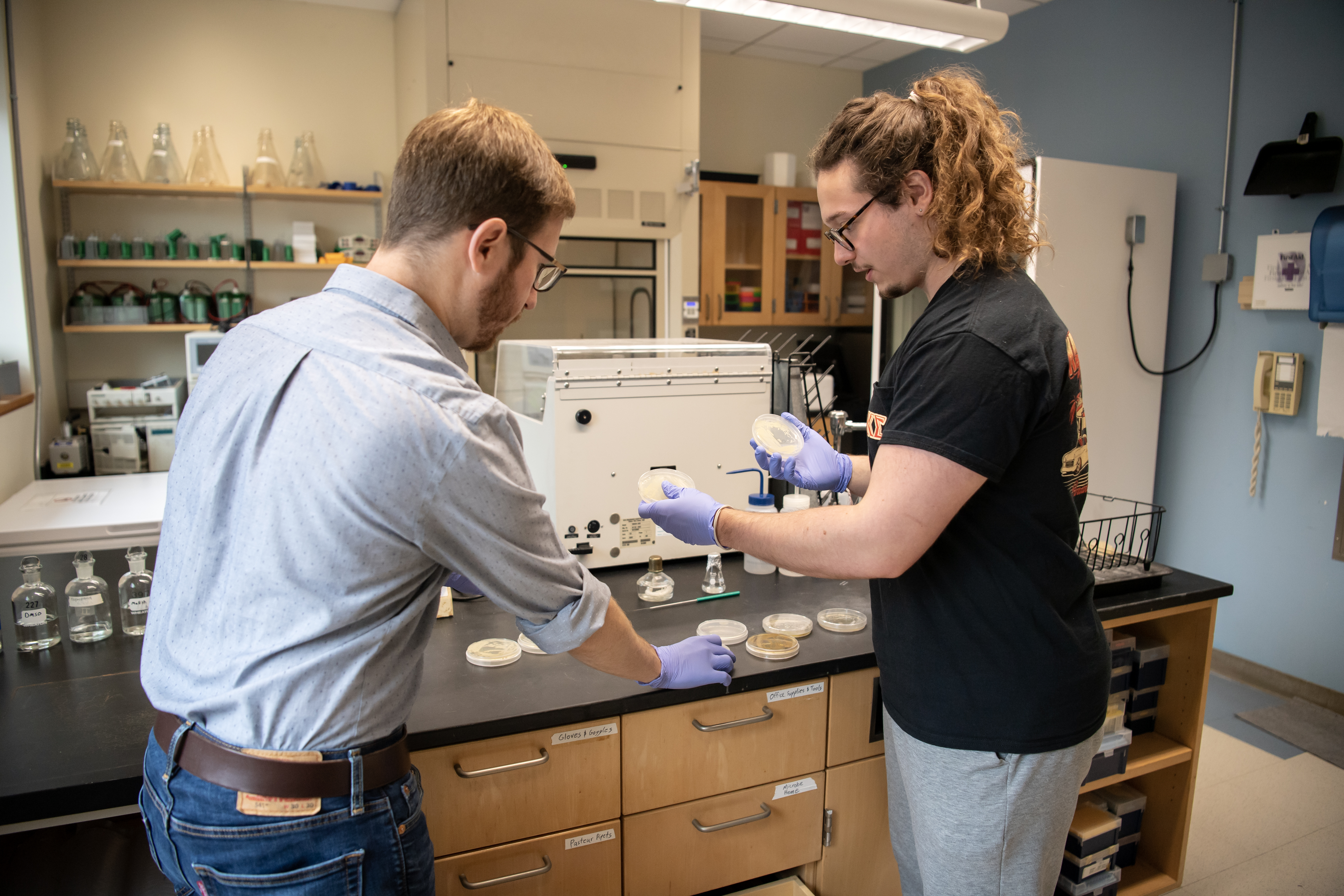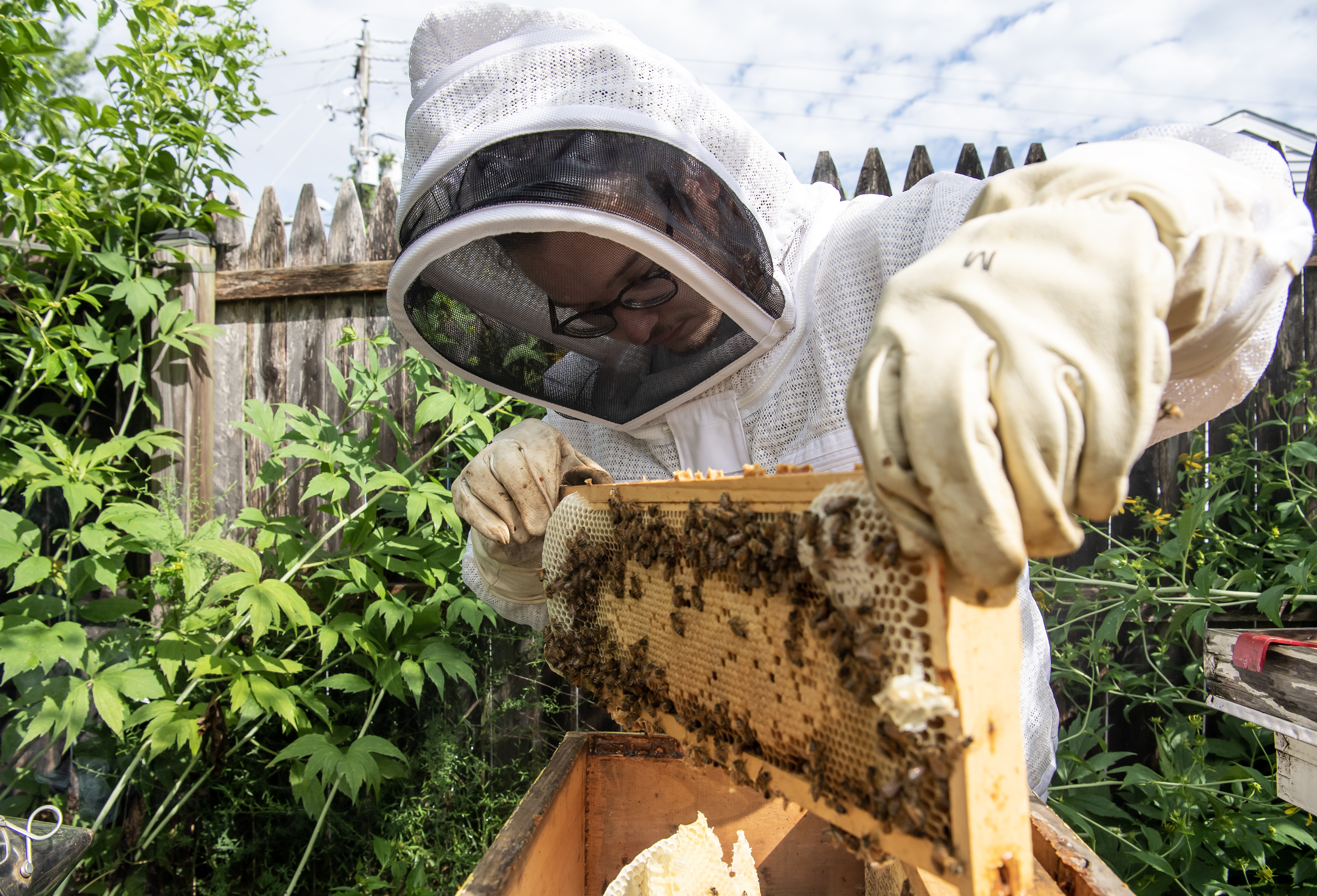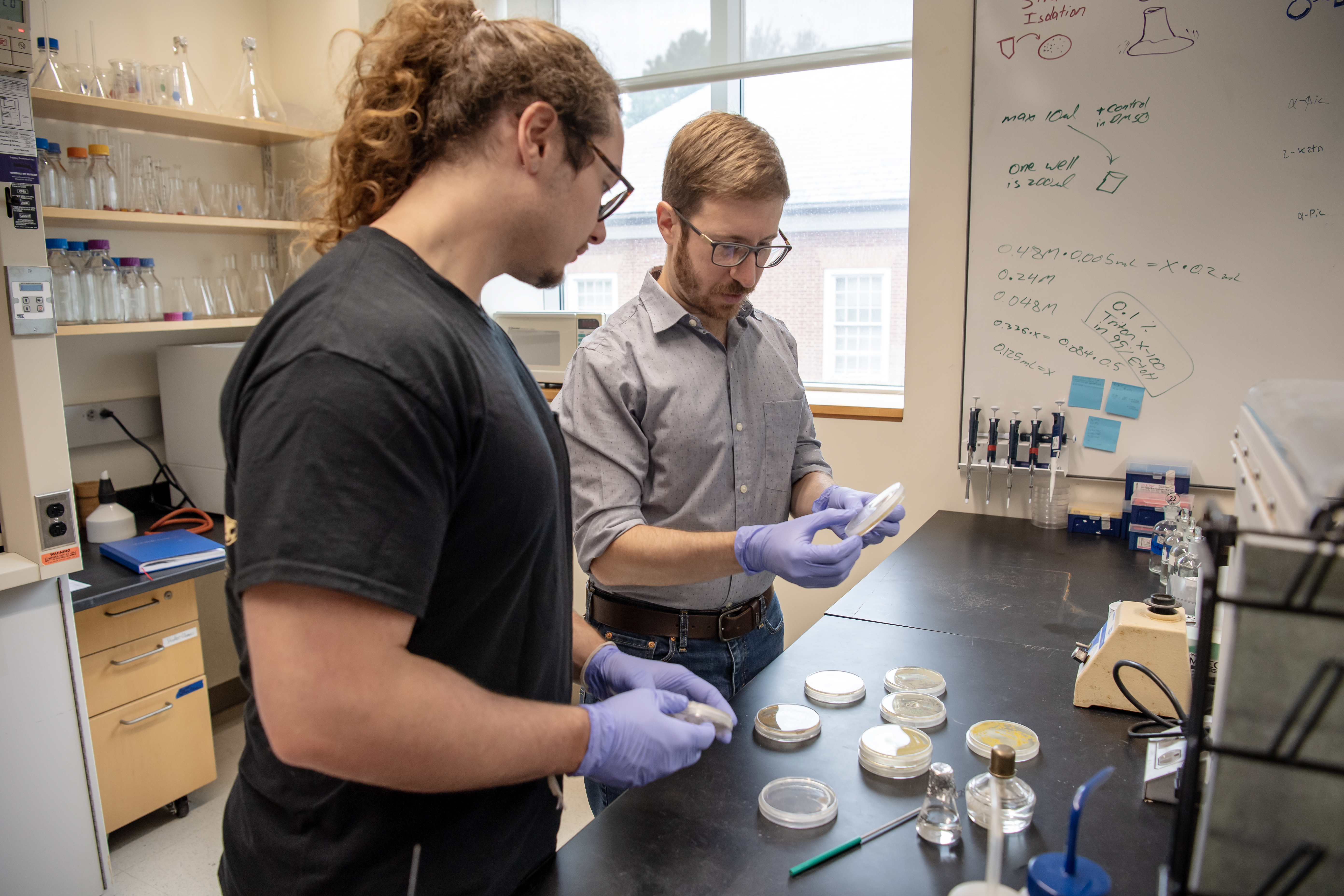Research Seeks to Find Natural Treatment for Honeybee Disease
Collaborative research this summer gives student beekeeper an opportunity to develop his chemistry skills while working with a faculty member on an issue he cares about.

Last fall, David Estes '24 took the free Beekeeping 101 course offered to Washington College students and continued to care for the hives in the Campus Garden throughout the academic year. Then when he began Medicinal Chemistry in spring 2023, he learned the professor, Daniel May, was looking for a student to help with research into potential treatments for honeybee diseases.
Before the first week of class was out, Estes made his way to May's office and asked how to apply for the summer research project, funded by the Toll Summer Research Program.
Since the beginning of June, Estes has been working in May's lab, isolating and culturing bacteria collected from the campus hives, extracting the compounds they produce, and beginning to test which might fight American foulbrood, a disease that attacks bee larvae.

“It's a really valuable experience. It's a peek at something that I would want to do for a career,” said Estes, who will be one of two apiculturists in the campus garden again this upcoming school year. "And it's just interesting work that I personally care about because I take care of the bees. So it's important to me.”
A chemistry and history double major, Estes said that working in a lab every day has been helpful for him to fully understand and be able to use lab techniques he may have only seen demonstrated in a class. It has allowed him to realize that working in a research lab is something he enjoys and finds rewarding. And it has given him a chance to collaborate with May, a new way to learn from a professor.
For May, having a student working in his lab has benefits for this summer's work and the research that will follow. May brought the research, and some initial samples, with him when he joined Washington's faculty in 2022 from the University of Wisconsin, where he had been a postdoctoral researcher. This is the first summer he has worked on the project with a student here.
“I was thrilled to have somebody who already knew the hive,” May said. “David has been developing a bioassay too this summer—a way that we can test all those extracts against our pathogen. The bioassay that David's developing now could wind up helping out future students that want to continue this project.”

While they have already found one promising compound that attacks American foulbrood, May and Estes know this is a long-term research project. Each vial of extract they collect, taken from a single type of bacteria each time, contains hundreds of compounds, so they are also building a library of things to test in the future against American foulbrood or other diseases, affecting bees or even other animals or plants.
American foulbrood was a good place to start, though, because it is particularly virulent and transmissible, devastating colonies of European honeybees, which are valuable economically for honey, beeswax, and pollination services. (Native bees actually pollinate more plants, but the European honeybees are well-suited to human uses because they can be encouraged to live in hives that people can move around.)
Although there is an existing treatment for American foulbrood available, it has a small window of time when it can be applied, has negative side effects on the bees, and is losing its effectiveness against the disease itself. Because the disease spreads so easily, when a hive is found to have American foulbrood, the usual treatment today is to burn the hive.
“Because current drug treatments are getting increasingly ineffective, it's important generally to find new antibiotics,” Estes said in a presentation he gave to the other Toll research fellows, who gather weekly during the summer to learn about each other's work in fields including chemistry, physics, psychology, biology, and computer science. He shared that nearly 42% of currently approved drugs are taken directly from natural sources, which informs the approach he and May are taking. “The bacteria that causes American foulbrood only really wants to grow in honeybee hives, so if we're finding bacteria in the hives, then there's a good chance that it will have something that might be able to fight American foulbrood.”
While May had some samples from Wisconsin to start the research, he said having beehives in the campus garden has been helpful for a few reasons. The more diverse sources of samples they have, the more opportunity there is to discover new effective compounds. And while May plans to recruit other local beekeepers to provide samples in the future, the fact that he and Estes are collecting their own directly from the campus hives means they have more control over keeping samples, and the hives, free of contamination.
“Our running hypothesis is that the bees are picking up bacteria from the flowers, the flowers are getting that from the dirt. We let the bees do a lot of the collecting for us,” May said of the process. “The bacteria make things for us. Eventually we'll take that mixture of hundreds and hundreds of compounds and separate them out until we find the one that is killing American foulbrood.”